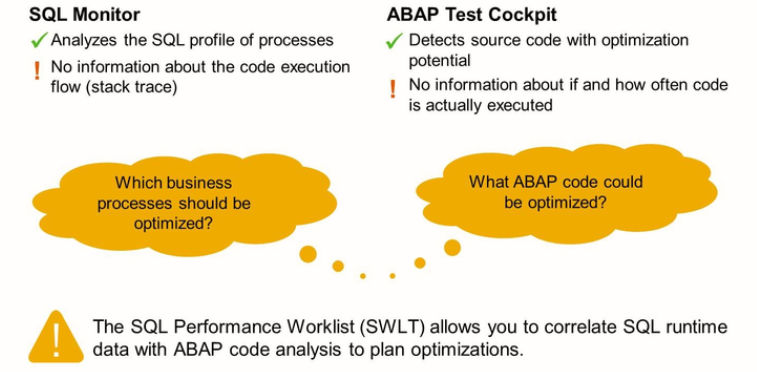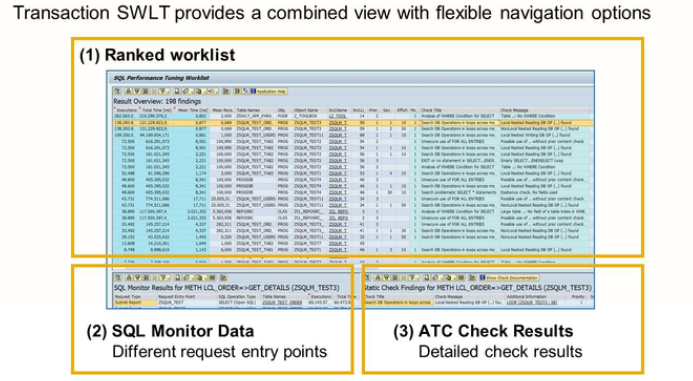Guided Performance Analysis
Best Practice when transitioning ABAP Code for SAP HANA
Instead of analyzing each ABAP program individually, a good practice when transitioning and optimizing ABAP applications to SAP HANA is to follow a three-step approach.

- Detect those places where performance can or should be improved, and to analyze and prioritize the findings based on the importance of the places detected.
- Optimize the existing code, using the prioritized list.
- Use SAP HANA’s new features to redesign and innovate your business processes.
Guided Performance Optimization

Determining an ABAP system’s SQL Profile: SQL Monitor

The new SQL Monitor is a powerful tool for capturing the SQL profile of a system or transaction. SQL profile refers to aggregated data about all SQL requests executed in the context of a certain business process, application and so on. This includes how often each request is executed, which tables are accessed, the total runtime, how many records are fetched, and more.
A central design goal was to ensure that the SQL Monitor can run in a production environment because this is where the real SQL profile of an application can be observed. The SQL monitor introduces only a minimal performance overhead and all data collection is done asynchronously without additional database interaction affecting the runtime of the actual business process.

The SQL monitor provides a dedicated transaction for displaying and analyzing the data, which in turn reads from the respective database tables containing the collected data. After the initial setup of the SQL Monitor, you can activate or deactivate the monitor via transaction SQLM. When you launch it, it displays the current status. You can activate it for all application servers or specific application servers.

After data has been collected, you can view the collected SQL profile either by navigating from transaction SQLM or by launching transaction SQLMD.
Creating a Prioritized Worklist

For performance optimization, combine the results of both static source code analysis(carried out via the ATP or Code inspector ) and the SQL Monitor runtime data.
The correlation can be done in another new tool, the SQL Performance Tuning Worklist. This tool can be used to create a ranking based on the cost and benefit of potential optimization.
